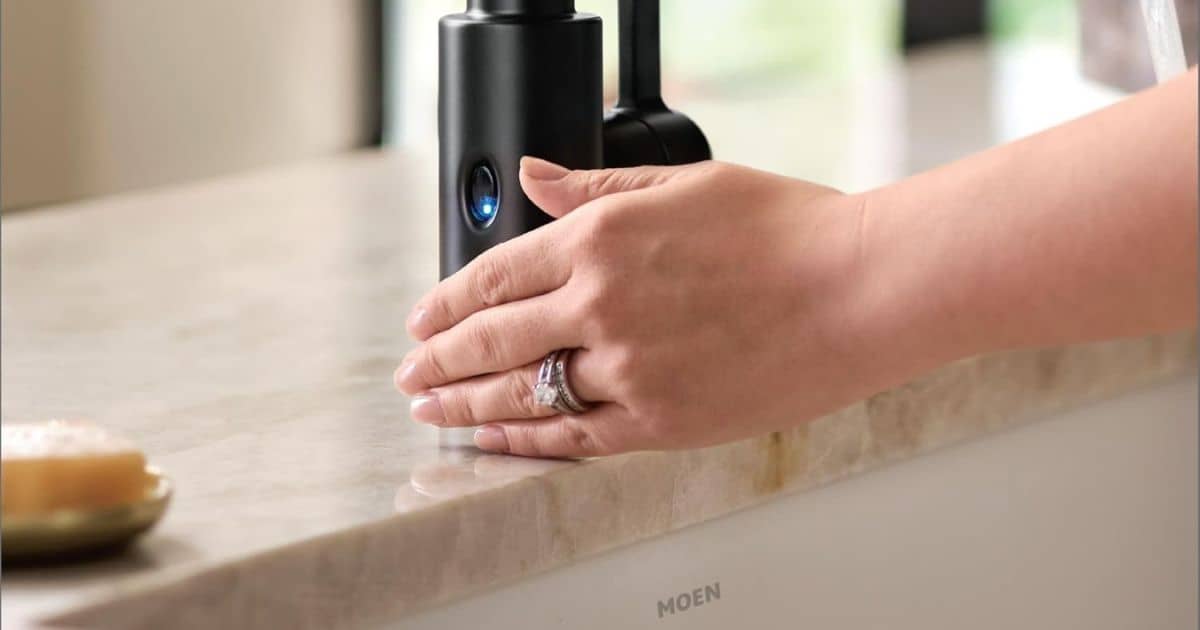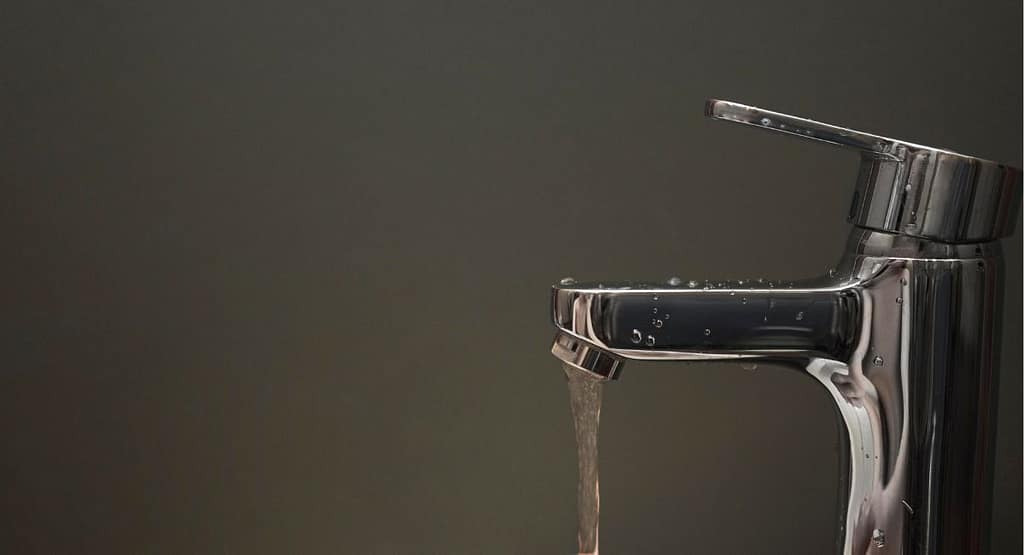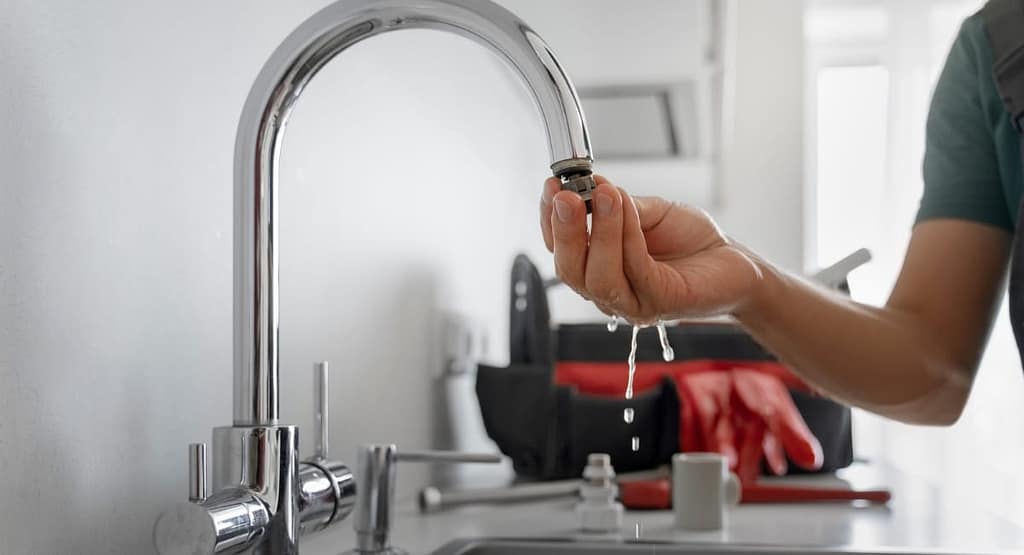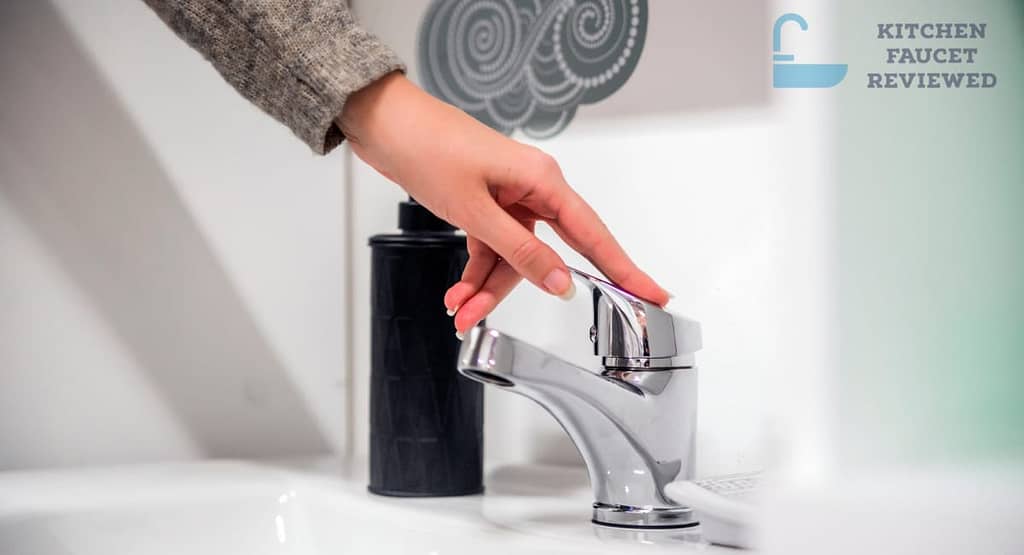Moen Touchless Kitchen Faucets Troubleshooting
In recent years, touchless kitchen faucets have revolutionized the way we interact with our kitchen spaces. Among the pioneers in this field is Moen, a brand known for its innovative and reliable touchless kitchen faucets. While these faucets offer convenience and hygiene benefits, like any technology, they might occasionally encounter issues. In this comprehensive guide, we’ll delve into Moen touchless kitchen faucet troubleshooting, equipping you with the knowledge to tackle common problems effectively.
1: Understanding How Moen Touchless Faucets Work
Delving into the intricacies of Moen’s touchless faucets reveals a fascinating fusion of cutting-edge technology and modern convenience. At the heart of these marvels lies a complex yet elegantly designed mechanism, engineered to revolutionize the way we interact with water sources in our daily lives.
The cornerstone of Moen’s touchless faucet technology is the implementation of advanced motion sensors, which operate on the principle of infrared detection. These sensors are strategically positioned within the faucet’s structure, meticulously calibrated to detect even the slightest gestures of the user. When you approach the faucet, the sensors spring to life, creating a virtual net of infrared beams around the faucet’s vicinity.
Upon sensing movement within this designated area, the sensors initiate a sequence of events that seamlessly culminate in the graceful flow of water. The detection process is a spectacle of precision. The infrared beams interact with the moving object – your hand, for instance – and their signals are immediately relayed to the central processing unit of the faucet. This unit, resembling the brain of the system, rapidly processes the incoming data, interpreting the motion patterns with remarkable accuracy.
As the processing unit deciphers the incoming signals, it makes an instantaneous decision regarding the water flow. Factors such as the proximity of the object, the duration of the movement, and the consistency of the gestures are meticulously analyzed. This sophisticated analysis ensures that the faucet doesn’t accidentally trigger due to ambient movements, preserving water and preventing any unnecessary splashes.
The intricacies of this mechanism don’t stop at mere motion detection. Moen’s touchless faucets are also designed to cater to your precise needs. By integrating customizable settings, the faucets allow users to regulate the water’s temperature and flow intensity according to their preferences. This is achieved through a harmonious synergy between the motion sensors and the faucet’s internal plumbing, adjusting the valves and controlling the mixing of hot and cold water streams.
However, it’s worth noting that this intricate symphony of technology is not impervious to external influences. The very sensors that make these faucets so convenient can sometimes be impacted by various factors. Changes in lighting conditions, the presence of reflective surfaces, or even the accumulation of dust particles on the sensors can potentially disrupt their accurate functioning. These are some of the nuances that can lead to troubleshooting scenarios, warranting a deeper exploration into the mechanics of these touchless marvels.
2: Common Moen Touchless Faucet Issues and Solutions
1: No Water Flow When Expected: Moen Touchless Kitchen Faucets Troubleshooting
Encountering a lack of water flow from your Moen touchless kitchen faucet when you expect it can be frustrating, but several straightforward steps can help troubleshoot the issue. Begin by confirming the power source – whether batteries or an AC adapter – is operational. This power source is vital for the faucet’s sensor to function effectively.
Next, inspect the sensor lens meticulously, ensuring it remains unobstructed by any debris or smudges that might hinder its ability to detect motion. Another aspect to verify is the water supply valves – make sure they’re fully open, as a partially closed valve could limit water flow.
2. Continuous Water Flow:
A touchless faucet that continuously releases water even when not in use can lead to both water wastage and an inconvenience. To address this, the first step is to examine the sensor area for any potential obstructions or residue buildup. Even small debris can interfere with the sensor’s accuracy. Additionally, it’s crucial to ensure the sensor isn’t exposed to direct sunlight. Sunlight can sometimes mimic hand movements, triggering the faucet unintentionally. Checking the solenoid valve for malfunction is also important. If it’s not operating correctly, it may need replacement to rectify the continuous water flow issue.
3. Erratic Water Temperature:
Inconsistent water temperature can disrupt your experience with a touchless faucet. Begin by confirming that the hot and cold water supply lines are correctly connected. A mix-up in these connections can result in erratic temperature output. It’s also advisable to inspect the faucet’s internal components for any clogs or debris that could be affecting water flow and temperature consistency.
To tackle this problem comprehensively, consider running a temperature calibration according to the manufacturer’s instructions. This calibration can help recalibrate the faucet’s internal mechanisms for improved temperature control.
4. Faucet Turning On by Itself:
The unexpected activation of a touchless faucet might be due to various factors, but there are specific strategies to address this issue. Start by examining the sensor area for any reflective surfaces that could potentially confuse the sensor. Reflective surfaces might cause the sensor to detect movement where there isn’t any.
Additionally, look out for other devices emitting infrared light in close proximity. These devices can interfere with the faucet’s sensor, leading to unintentional activations. If available, adjusting the sensor’s sensitivity settings can help fine-tune its responsiveness to avoid false activations.
5. Sensor Not Responding:
When the sensor of your touchless Moen kitchen faucet isn’t responding as expected, there are a few measures to consider. Begin by checking and, if necessary, replacing the batteries or verifying the functionality of the AC adapter. A reliable power source is fundamental to ensure the sensor’s operation.
Cleaning the sensor lens and the surrounding area is another crucial step – dirt or smudges can obstruct the sensor’s ability to detect motion accurately. If the problem persists, a reset might be required, following the manufacturer’s guidelines to restore the sensor’s responsiveness.
By addressing these common touchless faucet issues with the provided solutions, you can ensure a seamless and enjoyable experience with your Moen faucet while maintaining the convenience and hygienic benefits it offers.
3: Maintenance Tips to Prevent Future Issues:
1. Regular Cleaning:
Maintaining the cleanliness of your faucet’s sensor lens and surrounding area is crucial to ensuring its accurate functionality. Dirt, water spots, and debris can accumulate over time and interfere with the sensor’s ability to detect motion. Using a soft, damp cloth or a mild cleaning solution specifically designed for electronic devices will help prevent sensor misreadings and keep your faucet performing optimally.
Also check the best Moen bathroom faucets.
2. Battery Replacement:
For faucets that are powered by batteries, regular battery replacement is essential to maintain consistent and reliable performance. Over time, batteries can weaken, leading to intermittent sensor responses or even complete failure.
To avoid this, set a schedule to replace the batteries at appropriate intervals, ensuring that the faucet always has sufficient power to operate effectively. This simple step will prevent inconvenience and frustration down the line.
3. Avoid Harsh Cleaners:
While it’s tempting to use strong cleaning agents to tackle tough stains, it’s important to exercise caution when cleaning your sensor-equipped faucet. Harsh, abrasive cleaners can damage the sensor lens and the faucet’s finish, leading to diminished performance and an unsightly appearance.
Opt for gentle, non-abrasive cleaners that are safe for both the electronic components and the faucet’s surface. This approach will help extend the lifespan of your faucet while maintaining its pristine appearance.
4. Check Water Supply Lines:
Regularly inspecting and tightening the water supply connections of your faucet is a proactive way to prevent leaks and potential water damage. Over time, connections can become loose due to usage and water pressure fluctuations.
By including this task in your maintenance routine, you reduce the risk of sudden leaks that can lead to costly repairs and inconvenience. A simple quarter-turn with a wrench to snug up the connections can make a significant difference in preventing potential issues.
By following these meticulous maintenance tips, you’ll not only ensure the longevity and performance of your sensor-equipped faucet but also enjoy the convenience it offers without the worry of unexpected problems. Taking a proactive approach to maintenance will ultimately save you time, money, and hassle in the long run.
4: When to Seek Professional Help
In the realm of faucet maintenance and repair, a crucial aspect to consider is knowing when to seek professional help. While many minor issues can indeed be resolved through troubleshooting and DIY techniques, there are instances when the complexity of the problem or the intricacies involved in faucet disassembly call for the expertise of a professional.
1. Complexity of the Issue:
As a homeowner or an enthusiast, you might come across situations where the problem at hand goes beyond the realm of basic faucet repair. For example, if you’re experiencing consistent leaks even after attempting various fixes, this could indicate an underlying issue that requires specialized attention. A professional Moen service technician possesses the experience and knowledge to diagnose complex problems accurately and implement effective solutions.
2. Technical Expertise:
Faucets, particularly those of reputable brands like Moen, often come with intricate mechanisms and components designed for optimal performance. If you find yourself hesitant about dismantling the faucet due to fear of causing further damage or lack of familiarity with its inner workings, it’s advisable to reach out to a professional. Their technical expertise ensures that each component is handled correctly, minimizing the risk of unintentional damage.
3. Warranty Considerations:
If your Moen faucet is still under warranty, attempting extensive repairs or disassembly on your own could potentially void the warranty. Professional technicians are well-versed in manufacturer guidelines and can address issues without compromising your warranty coverage. This is especially important for higher-end faucets where warranty protection can be valuable.
4. Time and Convenience:
DIY faucet repair can be time-consuming, and there’s always a chance that despite your best efforts, the issue might persist. By opting for professional assistance, you not only save time but also avoid the frustration of repeated attempts to fix the problem. A trained Moen service professional can efficiently diagnose and resolve the issue, restoring your faucet to its optimal functionality.
5. Preventing Further Damage:
Sometimes, a seemingly minor problem can escalate if not addressed properly. What might begin as a small leak could worsen over time, potentially leading to water damage or increased utility bills. Seeking professional help at the early stages can prevent such issues from snowballing into larger and more costly problems.
Conclusion
Moen touchless kitchen faucets provide convenience and modernity to our kitchens. Understanding their functionality and troubleshooting common issues empowers homeowners to maintain their faucets effectively. By following the troubleshooting steps outlined in this guide, you’ll be well-equipped to address problems and enjoy the benefits of your touchless faucet for years to come.





